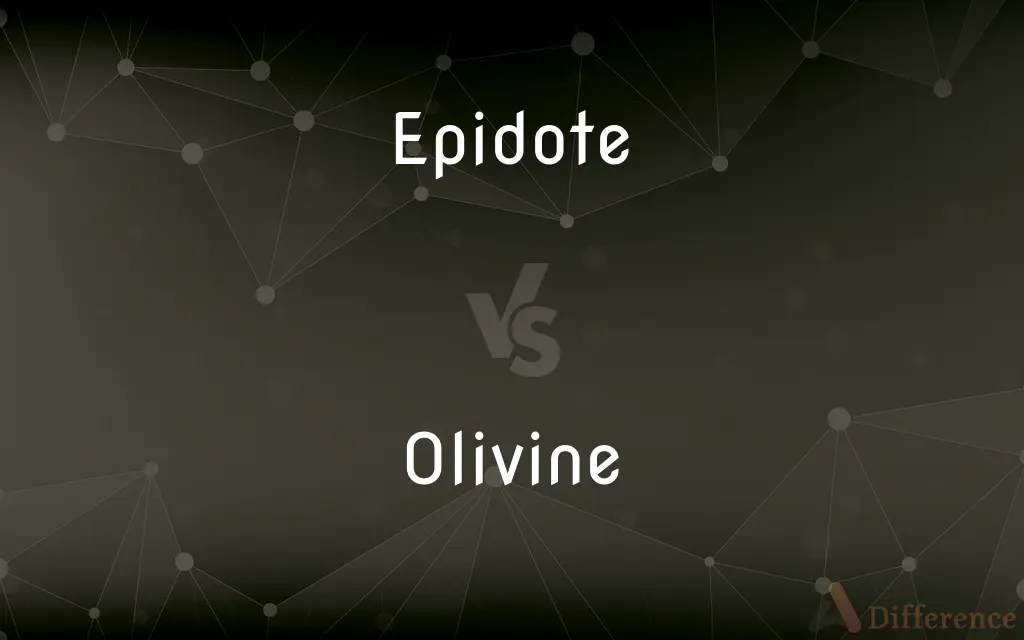Epidote vs. Olivine — What's the Difference?

Difference Between Epidote and Olivine
ADVERTISEMENT
Compare with Definitions
Epidote
Epidote is a calcium aluminium iron sorosilicate mineral.
Olivine
The mineral olivine () is a magnesium iron silicate with the chemical formula (Mg2+, Fe2+)2SiO4. It is a type of nesosilicate or orthosilicate.
Epidote
A lustrous yellow, green, or black mineral, Ca2(Al, Fe)3(SiO4)3OH, commonly found in metamorphic rock.
Olivine
A mineral silicate of iron and magnesium, principally (Mg, Fe)2SiO4, found in igneous and metamorphic rocks and used as a structural material in refractories and in cements. Also called chrysolite.
Epidote
(mineral) Any of a class of mixed calcium iron aluminium sorosilicates found in metamorphic rocks.
ADVERTISEMENT
Olivine
Any of a group of olive green magnesium-iron silicate minerals that crystallize in the orthorhombic system.
Epidote
A mineral, commonly of a yellowish green (pistachio) color, occurring granular, massive, columnar, and in monoclinic crystals. It is a silicate of alumina, lime, and oxide of iron, or manganese.
Olivine
A common name of the yellowish green mineral chrysolite, esp. the variety found in eruptive rocks. It is a silicate of magnesium and iron ((Mg,Fe)SiO4).
Olivine
A mineral consisting of magnesium iron silicate; a source of magnesium
Share Your Discovery

Previous Comparison
Receiver vs. Transceiver
Next Comparison
Line vs. Circle













































